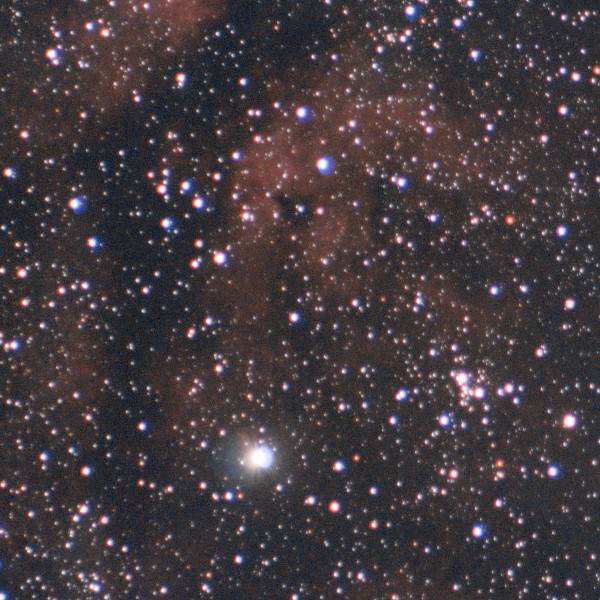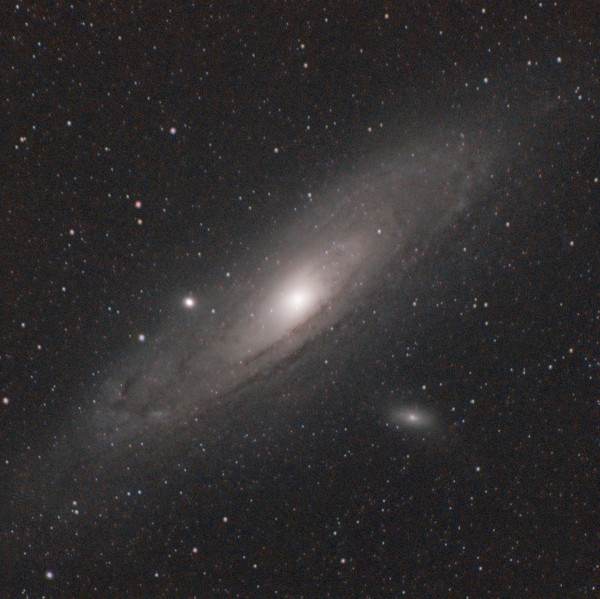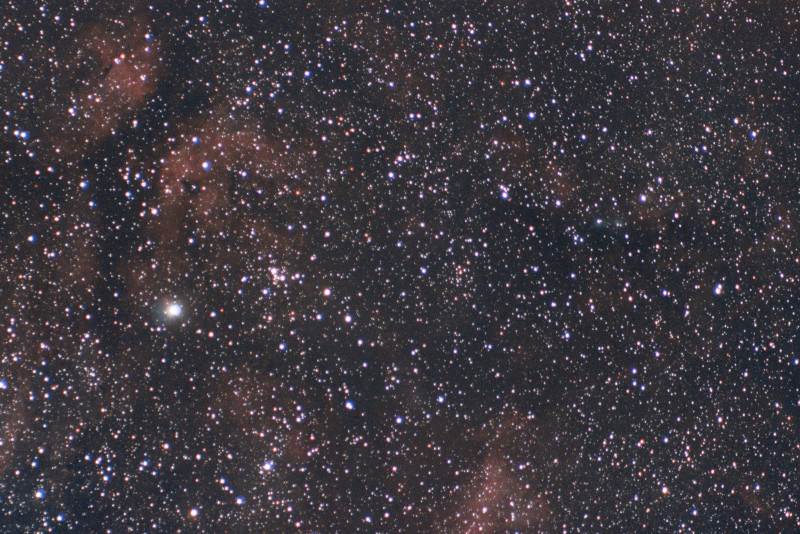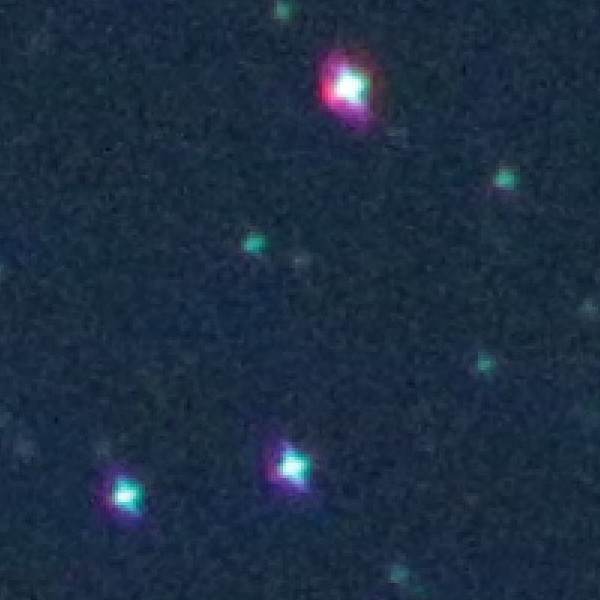
Finally, we are having a string of good nights here in southern Poland for astrophotography. Unfortunately, they happened to coincide with a brilliant full moon. Well, beggars can’t be choosers. So while my expectations around taking a great photo are a bit subdued, I’ll use the time to test out some different scenarios with the Gamma Star Tracker. I really want to explore using the Canon 75-300mm f/4-5.6 lens for astrophotography and see if this will be a viable lens for me moving forward. And at 300mm, I’m anxious to see if Gamma is up for the task. So let’s see!
My History with the Canon 75-300mm Lens

So you’ll recall that I tested the Canon 75-300mm f/4-5.6 lens for astrophotography just after my son brought this lens back from his trip to the US. As with any new piece of equipment, I needed to get familiar with using it and I had a pretty rough go with it. The big draw for me is the 300mm focal length of the lens. Especially when shooting with an APS-C camera and the 1.6x focal multiplier!
To the right, you’ll find the image I captured of Andromeda on my first night out with the Canon 75-300mm lens. Aside from some challenges in focusing, I was hopeful for what I could do with this lens.

I decided to take another crack with this lens about 5 days ago. With the moon rising in the East, I thought it would be a good opportunity to zero in on the Pinwheel galaxy to the North-Northwest. So I got everything set up and let ‘er rip. Gamma struggled a little bit but I believe this was because I didn’t properly balance the camera and I left the screws on the wedge loose. Surefire recipe for disaster. But even under less-than-ideal setup conditions, I still managed to keep about 60% of my photos. However, I’d be lying if I didn’t say that I was a little disappointed with the results. But I don’t want to be too tough as the moon was right full this evening.
And then last night, I decided I’d go ahead and take a run at the Sadr region which was directly overhead. This way I’ve got everything set up to maximize my chances of success. I shot for about 2.5 hours and was able to keep most of my shots. I let Siril stack the photos with the stars that ranked greater than 70% round and ended up with about an hour and a half of exposure time. Good stuff! But once again, I can’t say I was terribly impressed with the outcome.

Analyzing the Results
I’m trying to make a case for why the Canon 75-300mm f/4-5.6 lens belongs in my standard lineup of astrophotography lenses. I’ll be honest though, I just don’t see this lens making the grade for me.
The Positives
I love the 300mm focal length. I mean I’m really motivated to get something in this focal-length neighborhood moving forward. I’m a bit torn as to whether or not I want to make the jump to my first telescope or find a decent prime lens in the 200-400mm range. But both options start to get a little pricey so I don’t see either in my immediate future. Anyway, back to this lens, here’s the list of what I liked…
- The focal length of 300mm unlocks a new set of deep sky objects to reasonably photograph.
- At roughly 500g, this light lens is very easy to set up and operate on a tracker.
- It’s an autofocus lens that allows for easy hands-off focusing with your favorite software.
- The EF mount allows for the use of clip-in filters on an APS-C camera body.
Comes Up Short
With any evaluation, the question is always whether the positives outweigh the negatives. So I’ve just discussed all the things I like about the Canon 75-300mm f/4-5.6 lens. Now it’s time to get real about some of the things I feel left a lot to be desired.
Speed
At 300mm the minimum aperture available to use is f/5.6. This hasn’t really been an issue with tracking because it’ll collect light just fine if you give it time. But remember, I’m doing most of my shooting from a Bortle 6 zone. This makes it extremely difficult to focus and frame my photos. When focusing, I’m kind of forced to use Vega or Deneb overhead. And when framing, I have to take 15-second test images and then plate solve against them to figure out where the camera is actually pointing. This takes time. So for my particular requirements, this lens just feels a bit too slow.
Coma

I didn’t expect coma to be a big problem shooting at f/5.6. However, I was mistaken. The corners are particularly susceptible to this phenomenon but it’s noticeable well toward the center of the frame. I’m fairly certain that if I stop the lens down a bit more that things will improve a little bit. But based on what I previously mentioned, stopping down further is only going to make things more difficult.
The image to the right is a 300% zoom from one of my RAW images while I was imaging Sadr. This snip sits about a 3rd of the way into the image from the upper right-hand corner. All my stars have wings!
Chromatic Abberation

Upon further review, I definitely saw a lot of chromatic aberration in my first image captured with this lens. At the time, I dismissed this on account of poor focus. And to some extent this is true. But I was expecting that this would get better once I could dial in focusing with a Bhatinov mask. So now my focus is fine, but the chromatic effects still persist.
Another snip from a raw image highlights the issue. The misalignment of the color spectrum is very visible. Maybe my focus could be a bit better. But I’ve tested this 3 times now with pretty similar results. When fully zoomed out, the photo looks very soft and buttery. There’s a bit of a retro feel to the photos. But when I’m striving for sharpness, this is a tough issue to overlook. And I’ll add, very difficult to deal with in post-processing.
Does This Lens Measure Up?
Do I see the Canon 75-300mm f/4-5.6 as a viable lens for my astrophotography endeavors? The short answer for me is no. I’m heartsick to say this because I can see the potential for imaging at longer focal lengths. However, the coma and chromatic aberration are just a little too much for me to overcome.
In fairness, this is a telephoto lens. There have to be tradeoffs in performance when operating over focal distances of 75-300mm. I know a prime lens in this focal-length neighborhood would perform better. However, the price points for those lenses are beyond what I’m willing to invest in my hobby at this time. If I can get my hands on something to test, I will. But I won’t be going out and buying a lens anytime soon.
And I probably won’t be using this lens for astrophotography. Like I said though, there’s something nostalgic about the images which takes me back to when I was a kid looking at deep-space photos in magazines and stuff. But we’ve certainly been spoiled by seeing images from Hubble and the James Webb recently!
